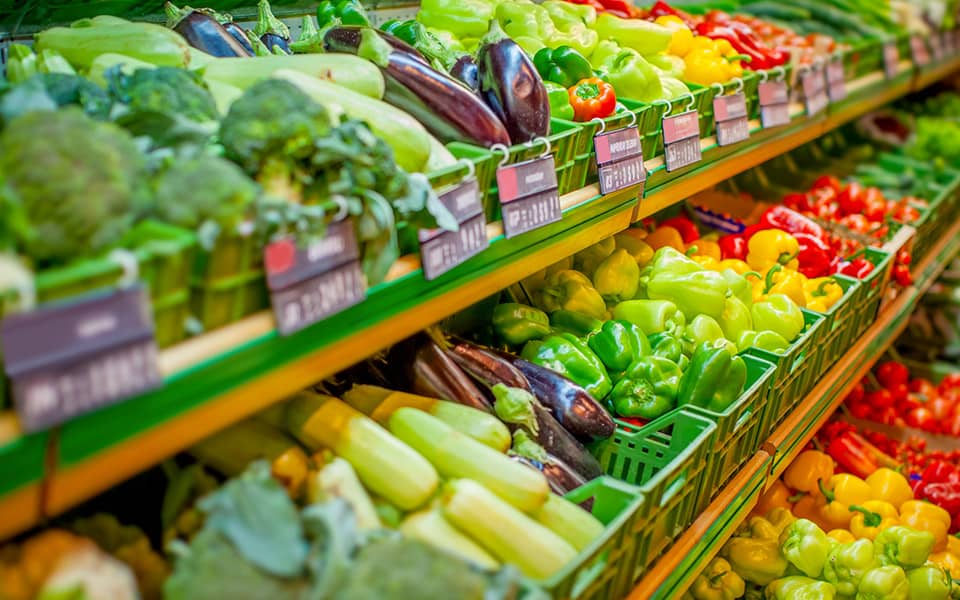*On June 1, 2023 Emerson’s Climate Technologies business became a new standalone company – Copeland. Though our name has changed, we are building on more than a century of HVACR innovation and industry leadership, and Copeland continues to offer the same products, industry stewardship, and learning opportunities you’ve grown to trust. Information found on this webpage posted before June 1, 2023 may contain our old name or branding, but you can be at ease knowing it was created with the knowledge and expertise of Copeland.
The year 2020 was an inflection point for the food retail industry. While many restaurants closed for in-person dining due to the COVID-19 pandemic, supermarkets and other food retailers were considered essential businesses and remained open. But for those responsible for these operations, this meant quickly adapting to new fulfillment scenarios, as many shoppers sought online grocery-ordering options such as curbside pickup and/or home delivery. I recently contributed to an ACHR The NEWS article where we discussed how the events of 2020 changed the food retail landscape and will continue to impact the commercial refrigeration industry in 2021 and beyond.

Online Retail Drives Refrigeration Decisions
As vaccine distribution increases and the COVID-19 pandemic hopefully recedes, the impacts of the pandemic will be felt well into the future. From a food retail perspective, the acceleration of e-commerce adoption appears to have permanently altered consumers’ buying behaviors and shifted the retail landscape.
According to a 2020 study by grocery e-commerce specialist Mercatus and research firm Incisiv, the growth rate of online grocery retail is expected to make up 21.5% of all grocery sales by 2025, representing a more than 60% increase compared pre-pandemic projections. As consumers continue to embrace both click-and-collect and home delivery options, many leading food retailers are rethinking their refrigeration strategies and expanding their fulfillment capabilities to meet both near-term and long-term projections.
The sheer volume of e-commerce sales took many food retailers by surprise in 2020 and has led them to take steps to shore up their online order fulfillment infrastructures. These include investments in additional refrigeration equipment and cold storage space — whether for in-house, click-and-collect operations, micro-fulfillment centers (MFCs) or even dark stores.
In addition, many retailers are evaluating their existing systems to determine if there’s available capacity to potentially tap into. Where there is not, distributed strategies such as stand-alone condensing units or self-contained cold storage are ideal solutions for creating additional refrigeration capacity. Of course, any new system designs or major retrofits will require more thorough consideration with respect to how these systems would align with retailers’ long-term sustainability goals.
It’s also important for contractors to continue playing a key role in helping retailers to make these decisions. They must be prepared with the knowledge and expertise in order to advise retailers on all the available short- and long-term refrigeration strategies — from self-contained propane cases to full CO2 systems to more distributed equipment architectures.
Cold Chain Data Tracking, Monitoring and Control
Another likely permanent impact will be the increased collective focus on cold chain tracking, monitoring and data analytics. Vaccine distribution challenges have highlighted the importance of monitoring product temperatures during transit – similar to the cold chain journey for food.
The adoption of temperature tracking, monitoring and control technologies used for the vaccines will likely accelerate the integration of these tools within the food cold chain — from farm to fork. This presents an opportunity to improve the working relationships, cooperation and technologies among producers, shippers and retailers to create an unbroken chain of temperature certainty throughout the food cold chain.
With supermarkets becoming one-stop shops for essential consumer needs — from freshly prepared and perishable foods to dry goods, pharmaceuticals and mini health care clinics — retailers have a variety of data streams strictly related to temperatures that they need to manage and monitor in order to preserve food quality and safety, as well as ensure proper vaccine storage. They also need to continuously track and monitor the performance of essential equipment and systems such as refrigeration, HVAC and lighting.
Fortunately, technological improvements and increased adoption of the internet of things (IoT) are giving supermarkets the abilities to capture, access, interpret and analyze data to deliver higher-value facility management solutions. Emerson’s Lumity™ supervisory control platform is designed to aggregate these data streams into consolidated views and provide insights to help retailers simplify their increasing facility management challenges.
From the perspectives of cold chain management, power management, equipment performance and preventative maintenance, we’re helping supermarket operators to bring all these aspects together within one cloud and one view — with robust data analytics to provide insights into each of these critical areas.
Protection for high-value shipments just got even better
We’re excited to announce the release of Copeland’s newest real-time tracker, the GO Real-Time...

Three proven strategies to prevent cargo theft
The over-the-road (OTR) transport industry is experiencing a surge in cargo thefts. As thieves...

Four Keys to Successful Cold Chain Shipping
Temperature management best practices for maximizing perishable food quality and safety When...
